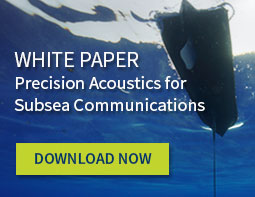We’re always excited to see how researchers are using Wave Gliders in new and creative ways, exploring what’s possible when you use technology to move beyond the limitations of traditional methods, combined with rigorous scientific validations. Here are three recent examples that have us excited for the future. A …Read more
Oceans ‘18 Impressions
November 19, 2018
Science Collaboration for a Healthy and Secure Ocean Last month, the MTS/IEEE OCEANS ‘18 conference was held in Charleston, SC. As always, it was an excellent venue to learn about the latest developments, policies and technological advancements in ocean science. Equally valuable was the opportunity to network with leaders and …Read more
GLIDER Unmanned Ocean Exploration – Advancing Knowledge of Arctic Marine Ecosystems
September 10, 2018
In the context of increased industrial activity in the Arctic, much attention is given to the potential effects on ecosystems considered sensitive by authorities and the community. Among these areas we find the Lofoten-Vesterålen islands on the Norwegian continental shelf, known for their highly productive fisheries and tourism industry, and …Read more
Cefas: Using Wave Gliders for Autonomous Fish Stock Monitoring
August 3, 2018
Collecting data and mapping fish stocks can be very challenging especially if you’re trying to accomplish this in the turbulent North Sea. With strong currents, crowded with hazards, such as sandbanks, merchant shipping and fishing vessels, collecting high quality data is daunting. This is especially true when you’re collecting data …Read more
Autonomous Thermal Front Tracking at the Kilauea Volcano Plume
July 12, 2018
The Kilauea volcano eruption has presented a rare scientific opportunity to study the impact of the lava flow on the ocean. Last month we sent two Wave Gliders around Hawai’i’s Big Island to monitor the water conditions, air quality, and underwater acoustics, and data collection is underway. But another opportunity …Read more
